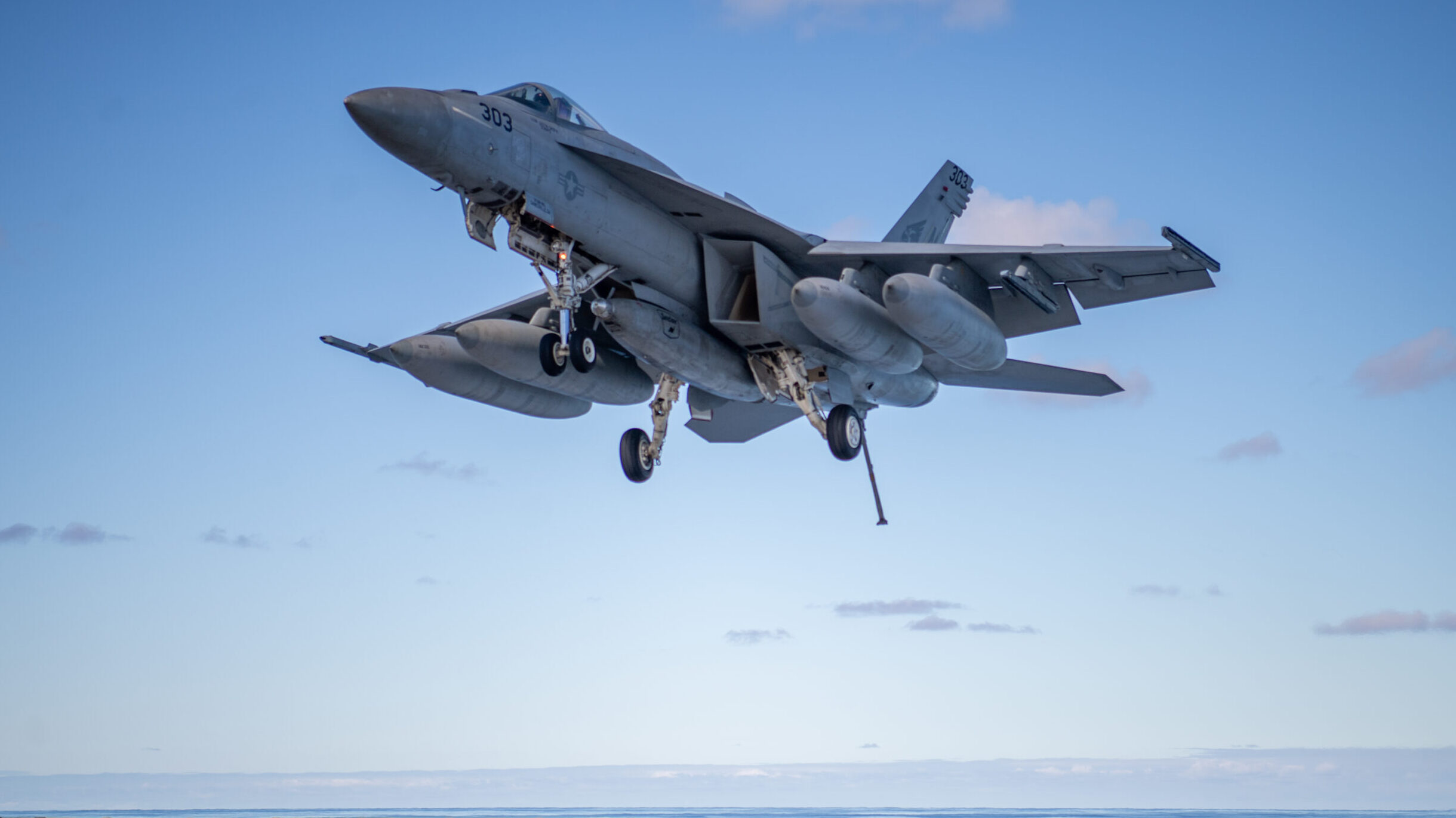
An F/A-18E Super Hornet, from the “Kestrels” of Strike Fighter Squadron (VFA) 137, makes an arrested gear landing on the aircraft carrier USS Nimitz (CVN 68). (U.S. Navy photo by Mass Communication Specialist 2Nd Class Justin McTaggart)
WEST 2023 — The Navy’s new tactical strike fighter fleet is failing to outperform its predecessors, both in terms of overall flight availability rates and how quickly age is taking a toll on the upgraded planes.
Those conclusions are from a new report from the Congressional Budget Office, an independent government watchdog best known for judging the monetary impacts of proposed legislation. The new report compares the availability and use of the Navy’s Super Hornet F/A-18E/F fleet against the legacy Hornet F/A-18C/D fleet as well as other Navy and Air Force planes.
“Availability rates of Super Hornets declined markedly between the mid-2000s and the mid-2010s; the older F/A-18C/D Hornets experienced a longer and steeper drop,” according to the report published Feb. 9. “Both types of Hornets experienced sharper and steeper drops in availability than the rest of the Department of the Navy’s fleet.”
CBO, which conducted the analysis at the request of lawmakers in a previous Congress’ House Armed Services Committee, found that Super Hornets had availability rates 18 percent lower than that of legacy Hornets at similar ages.
“Once aircraft age is considered, Super Hornets underperformed predecessor Hornets, with lower availability rates than the earlier generation of F/A-18C/Ds of the same age,” according to the report. “These findings suggest that age has had a more adverse effect on Super Hornets than it did on F/A-18C/Ds.”
The Super Hornet fleet makes up a large portion of the Navy’s tactical strike fighter inventory, and as Breaking Defense has previously reported, the service is struggling to maintain a sufficient number of them to meet all of its objectives.
Unlike their counterparts at the Government Accountability Office, a separate government watchdog agency, CBO does not make recommendations in its reports. But in a response to CBO’s findings, Navy officials indicated in the report that several factors could be contributing to the difference, such as “greater levels of galvanic corrosion arising from the greater use of composite metals in Super Hornets.”
CBO’s report also knocks down the theory that an increase in Super Hornet flying hours could be causing them to deteriorate faster than the legacy Hornet rates.
“Since Super Hornets reached age 6, their flying hours have fallen below those of F/A-18C/Ds of the same age,” according to the report. “As a result, typical cumulative lifetime flying hours for Super Hornets are below those of F/A-18C/Ds by age 7 and thereafter.”
CBO also compared Super Hornet flight hours to other Navy aircraft as well as Air Force fleets. The EA-18G Growlers, a plane that is similar in nature to the Super Hornet but also contains an electronic warfare capability, had lower availability rates and flew fewer hours per month by comparison. Compared to the AV-8B fleet, a fixed-wing aircraft designed to strike ground targets, the watchdog found Super Hornets had lower availability rates, but flew more hours.
CBO found that all Air Force fighter and attack aircraft, except the F-22, have outperformed the Super Hornets’ availability rates.
“F-22s had lower availability rates in their first 10 years than any other Air Force aircraft CBO analyzed for this comparison,” the report adds.






















